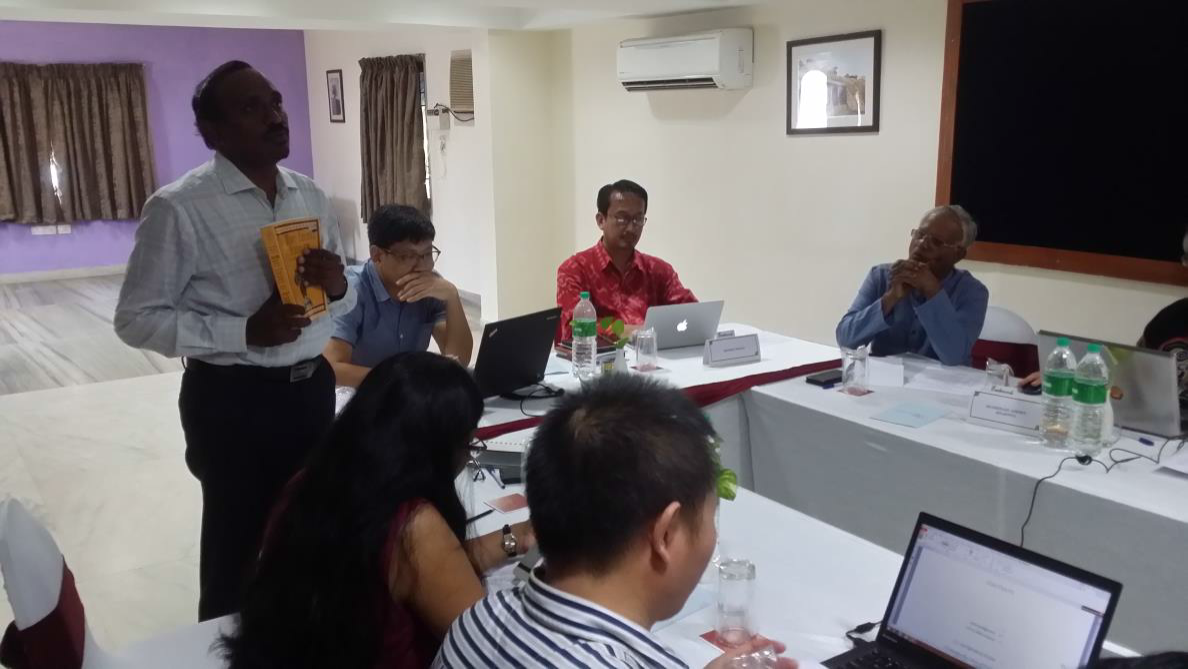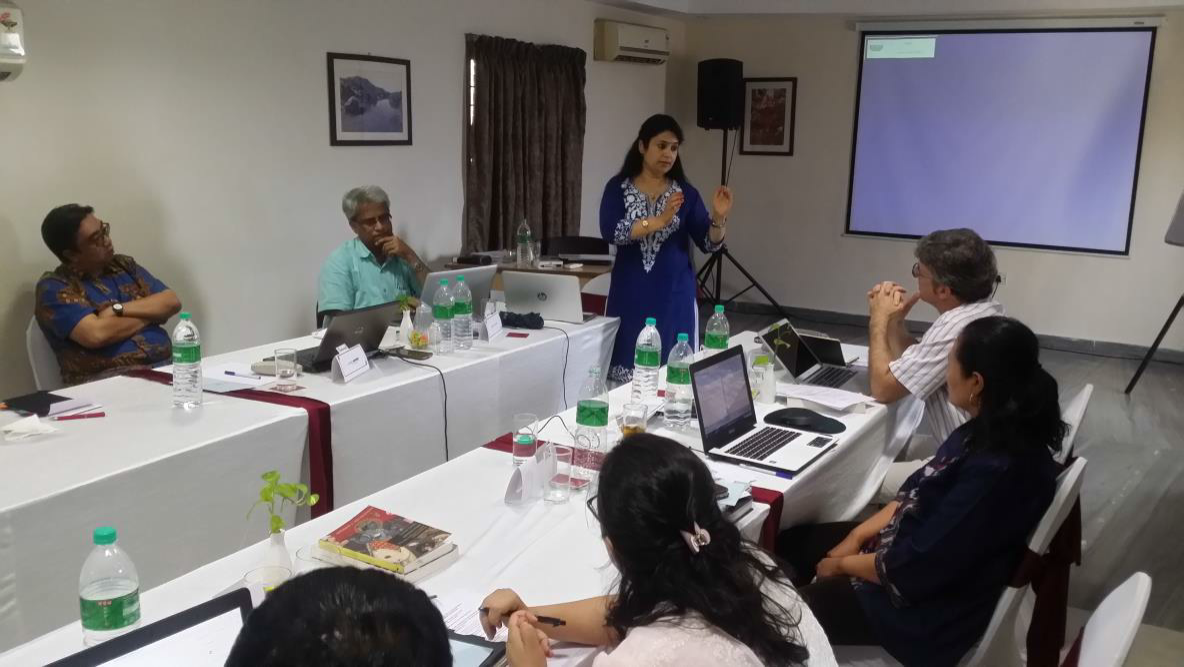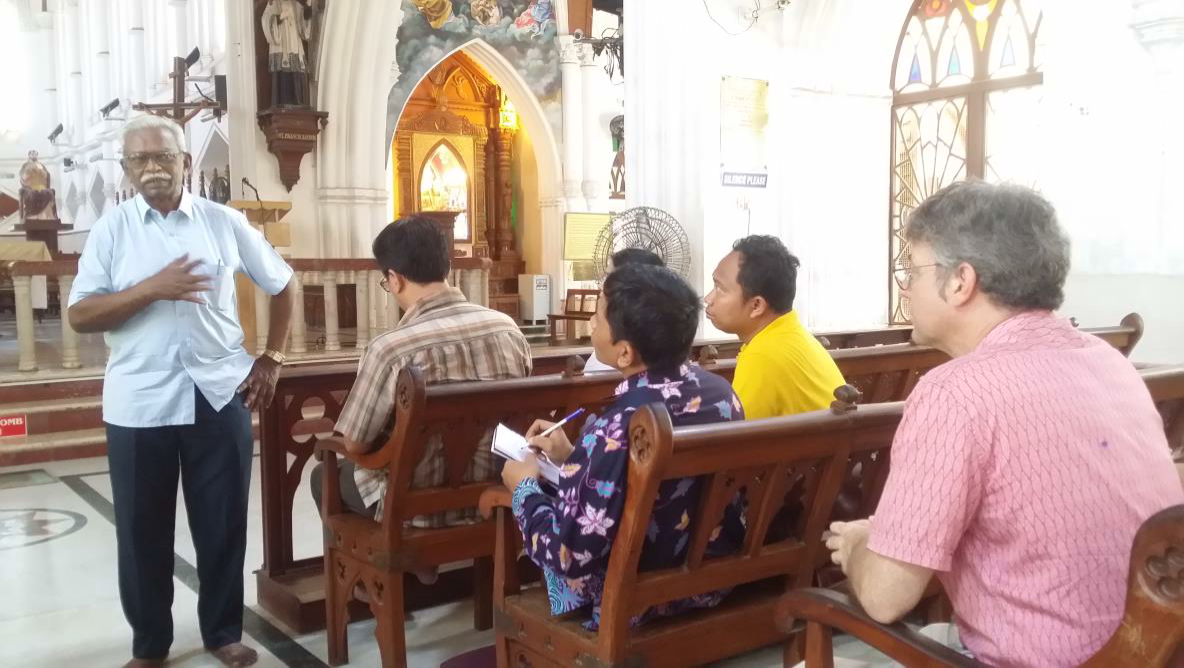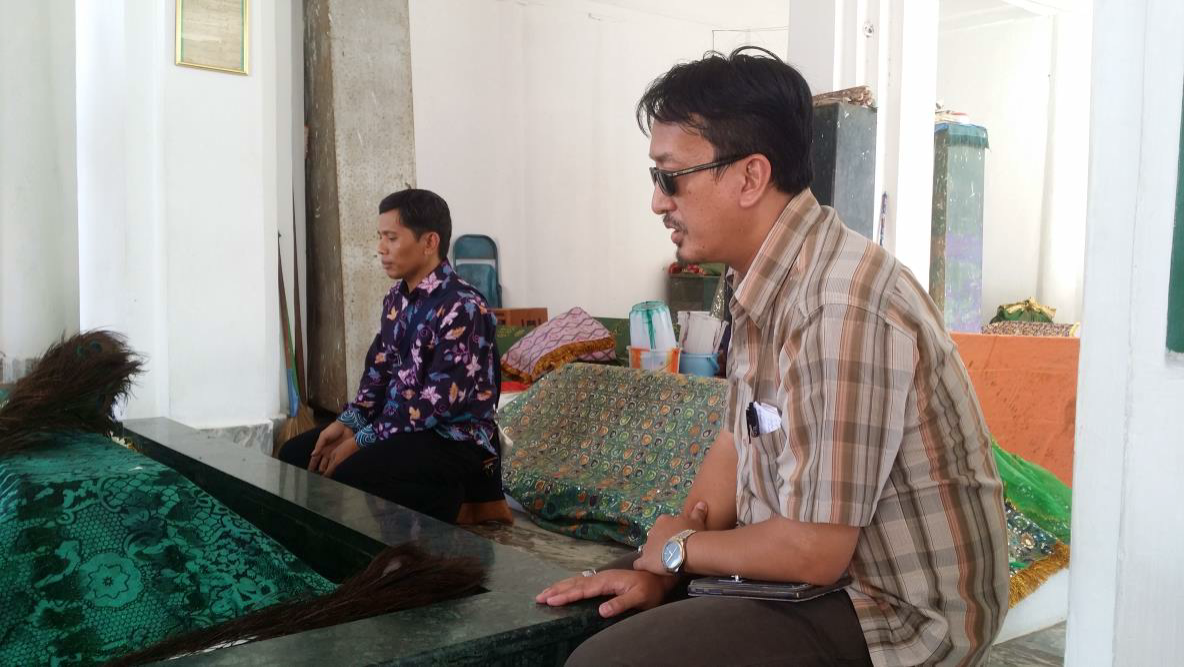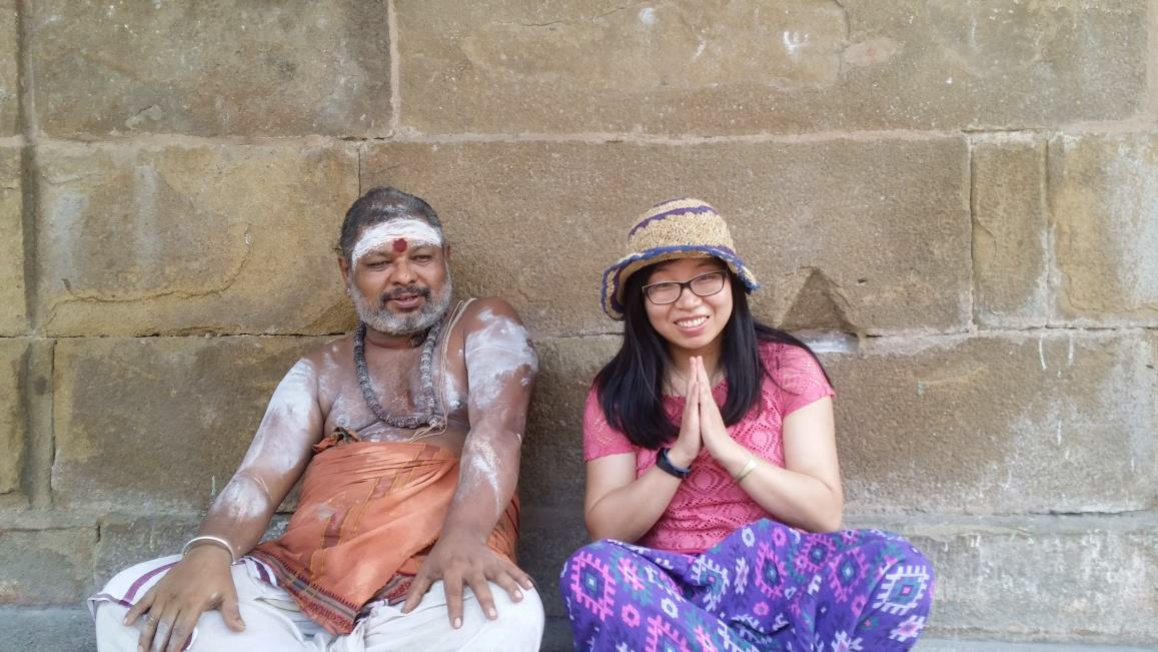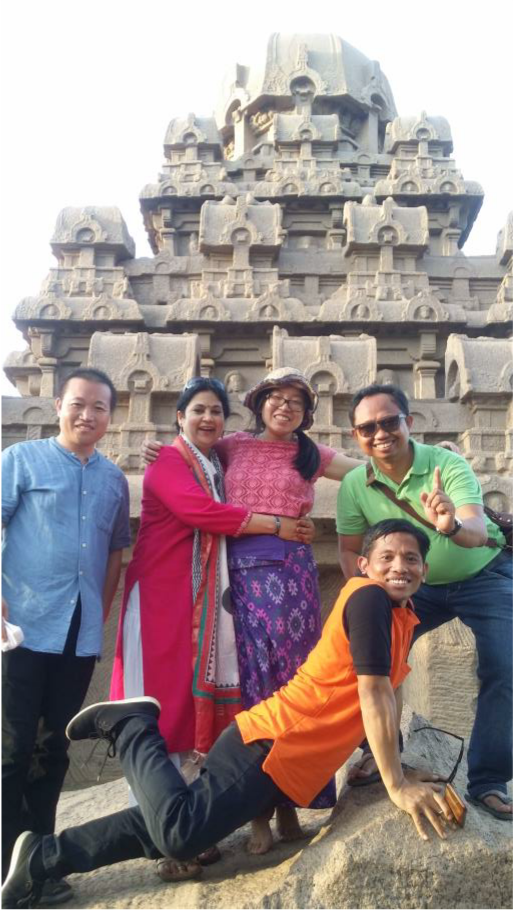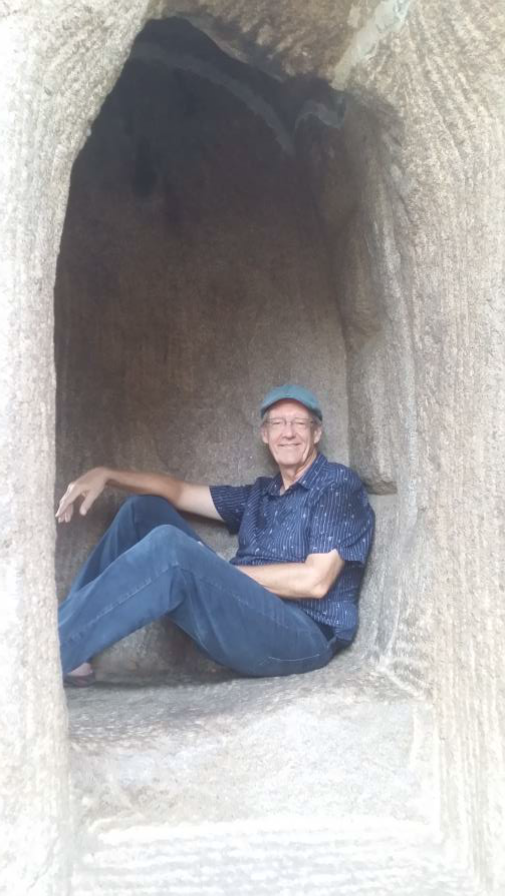Second-year summer school, Chennai, India 2018
Following last year’s workshop on the book The Crisis of Global Modernity: Asian Traditions and a Sustainable Future by Prasenjit Duara (Cambridge University Press, 2014), the ICI fellowship this year continued to engage in the discussion on the issues of spiritual, religion and society in the Asian context. The main selected book Peter van der Veer’s The Modern Spirit of Asia: The Spiritual and the Secular in China and India (Princeton University Press, 2013) provided the important working concepts, such as “spirituality,” “secular” and “modern,” for the further investigation towards religion and society in India and China. Another selected book Carl Olson’s The Many Colours of Hinduism: A Thematic-Historical Introduction, recommended by Dr. Felix Wilfred (founder-director of the second summer school hosting institute ACCS, Chennai), laid the theological ground for us to examine the different dimensions of Hinduism.
Opening remarks on The Many Colours of Hinduism in the book workshop by James
Ponniah (India)
Ponniah (India)
Preeti Oza (India) giving some remarks before the commentary session on her paper “Culture and Identity Politics: Negotiations in the Transnational Spaces”
Two days of field trip in Chennai
The project aims at establishing a collaborative network across India, China and Indonesia not only at the level of academic publication, but also at the level of religious conversations where the participants can explore different religious practices and acquire insights for future research. In two days of time on May 16 and May 17, we visited nine remarkable religious spots in Chennai which display the intriguing religious pluralism in the Tamil Nadu context, from local/popular to international/global, or from eastern to western.
St. George’s Cathedral
Ruijing writes: When studying in Germany, I travelled around Europe and visited many grand churches. The figures of Christ Jesus in cross I’ve seen was almost the same: naked, bleeding and suffering. While in Chennai, Jesus Christ showed up differently—he was well-dressed, wearing a crown, standing straight and embracing the world, pretty much like a king. I was told this is because of the different tradition.
Dargah
Yongjia writes: Religions in India seems not so much about Hinduism, Buddhism, Jainism, Islam, Zoroastrianism, and endless new religious movements. David Palmer’s paper warn us of the danger of looking at religion in isomorphic ways. To me, religions in India is a constant conversation between the-man-in-the-world, and the sanyasi. A sanyasi, or a guru, or a renouncer, is always able to start a new religion by inventing his own theology and harvesting his own followers. It seems to me most Indian religions were the institutionalisations of such movements, and all religions from colonisers were understood as such by the Indians. There is a constant traditionalisation of charisma and vice versa.
Kanchipuram
i Fransiska writes: I personally have not been familiar with Jainism, either because the religion is not known in Indonesia or because my knowledge about it is nothing.
First, I was very impressed by their building. It is a beautiful temple and for sure, it took a lot of money to build. The entire building is made of expensive granite stone. It was beautifully carved, smooth and amazingly beautiful. It is an extra-ordinary building. It was the work of high-class art. For me, it shows the taste of the owners, their status and the way they present themselves in the public space in Chennai. The building has been a symbol of an upper class group. Is this the religion of the elite group in Chennai? However, there is another interpretation that people all over the world tended to do the best for their religion and faith. People are willing to do anything for the best of their religion: to build the best and most beautiful and amazing buildings, to give the best part of their life to God and religion.
Second, if the temple building indicates the upper class social and economic status of the Jain in India, my next reflection is whether capitalism in India has anything to do with Jainism ethics and philosophy. What is the role of Jainism in the Indian economy? Looking at a large gap between the rich and the poor in India, what is Jainism's role in the constructing society in India?
Third, it was interesting that the only religious spot where women were the representatives to welcome our group was the Jain Temple. The women also took the charge of giving explanation about their community and religion. It might imply that women get better position in this group. This raises the question of whether this group has better gender awareness than the other communities? If so, does this mean that Jainism adopts more modern thoughts than the other communities? How and why? I need to read more about them.
First, I was very impressed by their building. It is a beautiful temple and for sure, it took a lot of money to build. The entire building is made of expensive granite stone. It was beautifully carved, smooth and amazingly beautiful. It is an extra-ordinary building. It was the work of high-class art. For me, it shows the taste of the owners, their status and the way they present themselves in the public space in Chennai. The building has been a symbol of an upper class group. Is this the religion of the elite group in Chennai? However, there is another interpretation that people all over the world tended to do the best for their religion and faith. People are willing to do anything for the best of their religion: to build the best and most beautiful and amazing buildings, to give the best part of their life to God and religion.
Second, if the temple building indicates the upper class social and economic status of the Jain in India, my next reflection is whether capitalism in India has anything to do with Jainism ethics and philosophy. What is the role of Jainism in the Indian economy? Looking at a large gap between the rich and the poor in India, what is Jainism's role in the constructing society in India?
Third, it was interesting that the only religious spot where women were the representatives to welcome our group was the Jain Temple. The women also took the charge of giving explanation about their community and religion. It might imply that women get better position in this group. This raises the question of whether this group has better gender awareness than the other communities? If so, does this mean that Jainism adopts more modern thoughts than the other communities? How and why? I need to read more about them.
Mahabalipuram
Daniel K. Listijabudi writes: Several things among others that I learned are : (1) the religiously intermingled Asian context provides us many important resources to engage with. Our calling is to develop a socio-cultural analysis on and within these contexts in order to create more creative and real ideas for the benefit of the academic spheres; (2) the Asian context should empower us to develop inter-religious and inter-field study interactions for the benefit of every elements in our society where people may live more in justice, love, peace and truth in our cosmos.
Many thanks to the kindness of the United Board that makes this programme run so well. May everyone of us contribute in the real context of our own but interconnected “corner.”
The grace of God, may be with us all.
Many thanks to the kindness of the United Board that makes this programme run so well. May everyone of us contribute in the real context of our own but interconnected “corner.”
The grace of God, may be with us all.
